Andy Murray and Angelique Kerber emerged as the year-end World No 1s and the standout players of 2016, but this was also a year that will be remembered for its milestones, off-court controversies and plenty of feel-good fairytale stories. Novak Djokovic completed his career slam by winning the French Open and Serena Williams lifted her record-equalling 22nd major trophy, while Roger Federer, Rafael Nadal and Maria Sharapova were left with careers to rebuild. Here’s a look at some of the most defining moments of the 2016 tennis season. Roger Federer’s slip [caption id=“attachment_3175740” align=“alignnone” width=“825”]
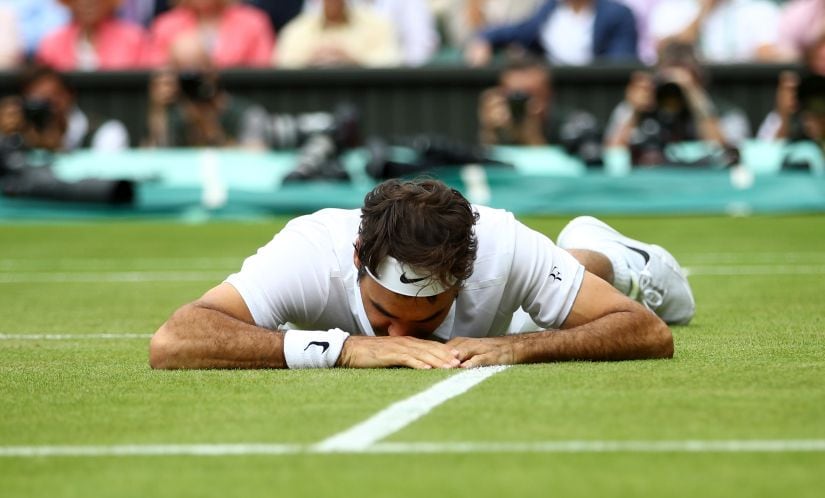 Roger Federer’s fateful slip in the Wimbledon semifinal against Milos Raonic. Getty Images[/caption] Before Roger Federer’s fateful slip in the Wimbledon semifinal against Milos Raonic in what would be the last match he played this year, it was the slip after the Australian Open that changed the course of his 2016 season. Federer said he was preparing a bath for his twin daughters when he turned and heard a click in his left knee, leading to the first surgery of his career. Intermittent competitions aside, he decided to skip the French Open — the first Grand Slam that he missed in 16 years. He returned once again, on grass, his favourite surface, but couldn’t reach the final, even at Halle. At Wimbledon, he showed glimpses of his vintage self — with the quarterfinal against Marin Cilic, winning from two sets down — giving many hope. And then came the loss to Raonic, another five-setter, which ended in the enduring image of him lying face down on the grass. Federer ended up bowing out for the rest of the season, setting off a chain reaction (If Boris Becker is to be believed) that impacted the entire 2016 season and can potentially impact 2017 as well, as he returns to the Australian Open rankled 16 or lower. – Zenia D’Cunha Angelique Kerber upsets Serena Williams at Australian Open [caption id=“attachment_3175728” align=“alignnone” width=“825”]
Roger Federer’s fateful slip in the Wimbledon semifinal against Milos Raonic. Getty Images[/caption] Before Roger Federer’s fateful slip in the Wimbledon semifinal against Milos Raonic in what would be the last match he played this year, it was the slip after the Australian Open that changed the course of his 2016 season. Federer said he was preparing a bath for his twin daughters when he turned and heard a click in his left knee, leading to the first surgery of his career. Intermittent competitions aside, he decided to skip the French Open — the first Grand Slam that he missed in 16 years. He returned once again, on grass, his favourite surface, but couldn’t reach the final, even at Halle. At Wimbledon, he showed glimpses of his vintage self — with the quarterfinal against Marin Cilic, winning from two sets down — giving many hope. And then came the loss to Raonic, another five-setter, which ended in the enduring image of him lying face down on the grass. Federer ended up bowing out for the rest of the season, setting off a chain reaction (If Boris Becker is to be believed) that impacted the entire 2016 season and can potentially impact 2017 as well, as he returns to the Australian Open rankled 16 or lower. – Zenia D’Cunha Angelique Kerber upsets Serena Williams at Australian Open [caption id=“attachment_3175728” align=“alignnone” width=“825”]
 One of the most striking moments of the year was a gracious, smiling Serena in the post-match ceremony. Getty Images[/caption] The women’s tour in 2016 saw a surprising start in Australia at the first Grand Slam of the season. World No 1 Serena Williams was gunning for her seventh major Down Under against Angelique Kerber in the final. This was Serena’s 26th slam final, while Kerber was playing in her maiden one. Yet it was the German who prevailed after two hours and three sets of scintillating tennis. Kerber’s 6-4, 3-6, 6-4 victory set the tone for the rest of the WTA season – she eventually went on to reach the Wimbledon final, win the Olympic silver, lift the US Open trophy and end the year as World No 1. But one of the most striking moments of the year was a gracious, smiling Serena in the post-match ceremony. Magnanimous in defeat, she seemed genuinely happy for Kerber and the sight of her smiling at Kerber gesturing towards her first Grand Slam trophy is one that will endure in tennis fans’ minds for years to come. — Nikhila Makker Andy Murray claims No 1 in final showdown [caption id=“attachment_3175746” align=“alignnone” width=“825”]
One of the most striking moments of the year was a gracious, smiling Serena in the post-match ceremony. Getty Images[/caption] The women’s tour in 2016 saw a surprising start in Australia at the first Grand Slam of the season. World No 1 Serena Williams was gunning for her seventh major Down Under against Angelique Kerber in the final. This was Serena’s 26th slam final, while Kerber was playing in her maiden one. Yet it was the German who prevailed after two hours and three sets of scintillating tennis. Kerber’s 6-4, 3-6, 6-4 victory set the tone for the rest of the WTA season – she eventually went on to reach the Wimbledon final, win the Olympic silver, lift the US Open trophy and end the year as World No 1. But one of the most striking moments of the year was a gracious, smiling Serena in the post-match ceremony. Magnanimous in defeat, she seemed genuinely happy for Kerber and the sight of her smiling at Kerber gesturing towards her first Grand Slam trophy is one that will endure in tennis fans’ minds for years to come. — Nikhila Makker Andy Murray claims No 1 in final showdown [caption id=“attachment_3175746” align=“alignnone” width=“825”]
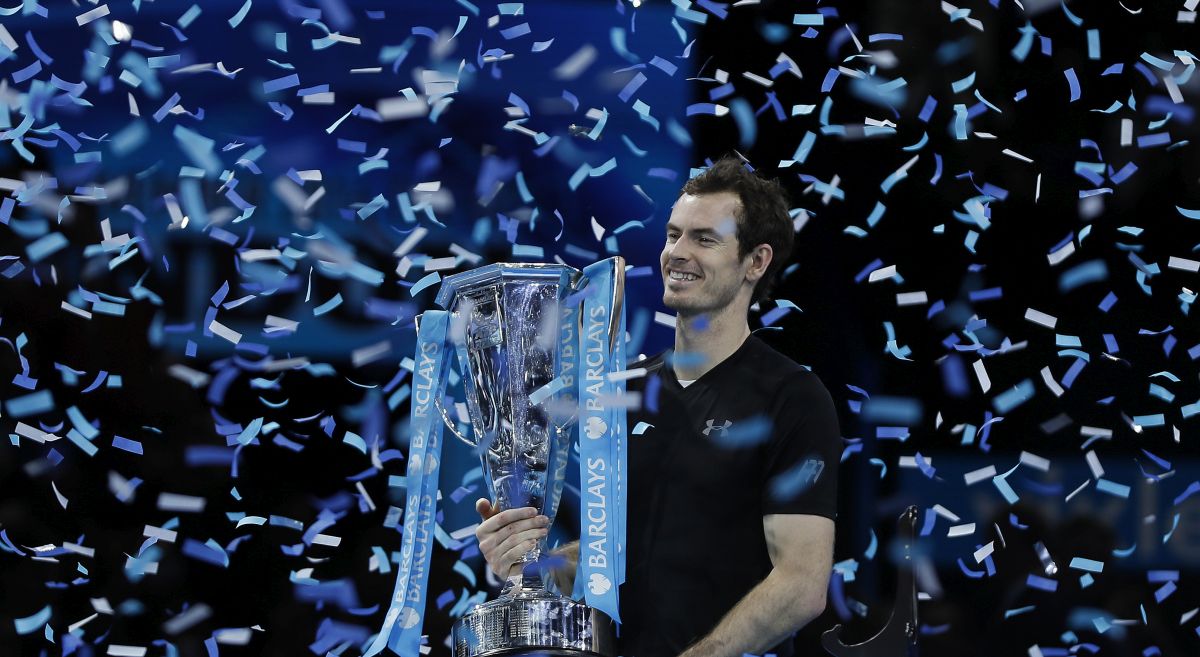 The ATP World Tour Finals showdown against Djokovic was an accurate summary of Murray’s playing career. AP[/caption] When the 2016 season began, it was all about Novak Djokovic. He won the first two Slams of the year — completing the coveted Career Slam at Roland Garros — and looked to set for greater things, maybe even a Golden Slam. But then it came all down for the Serb, while his Scottish rival began his steady climb upwards. Andy Murray won his second Wimbledon in July; in August became the first man to successfully defend the Olympics gold; and by November he was the world No 1. It was a speedy upward trajectory that perhaps even mum Judy Murray might have found hard to imagine, but Murray did it the tortoise way — slow and definitely steady. The rise was marked by an improved show on clay, his reunion with coach Ivan Lendl, and consistent amassing of ranking points. Eventually, the battle for the year-ending top spot went down to the season’s last title fight — the ATP World Tour Finals. A possibly-fatigued Murray needed to defeat Djokovic in the final to end 2016 as number 1. He did just that with a straight-sets victory to cap a glorious year on a five-title, 24-match winning run. The final showdown was an accurate summary of Murray’s playing career — fighting, dogged tennis to finish on top. – Zenia D’Cunha Sania Mirza’s split from Martina Hingis [caption id=“attachment_3176116” align=“alignnone” width=“825”]
The ATP World Tour Finals showdown against Djokovic was an accurate summary of Murray’s playing career. AP[/caption] When the 2016 season began, it was all about Novak Djokovic. He won the first two Slams of the year — completing the coveted Career Slam at Roland Garros — and looked to set for greater things, maybe even a Golden Slam. But then it came all down for the Serb, while his Scottish rival began his steady climb upwards. Andy Murray won his second Wimbledon in July; in August became the first man to successfully defend the Olympics gold; and by November he was the world No 1. It was a speedy upward trajectory that perhaps even mum Judy Murray might have found hard to imagine, but Murray did it the tortoise way — slow and definitely steady. The rise was marked by an improved show on clay, his reunion with coach Ivan Lendl, and consistent amassing of ranking points. Eventually, the battle for the year-ending top spot went down to the season’s last title fight — the ATP World Tour Finals. A possibly-fatigued Murray needed to defeat Djokovic in the final to end 2016 as number 1. He did just that with a straight-sets victory to cap a glorious year on a five-title, 24-match winning run. The final showdown was an accurate summary of Murray’s playing career — fighting, dogged tennis to finish on top. – Zenia D’Cunha Sania Mirza’s split from Martina Hingis [caption id=“attachment_3176116” align=“alignnone” width=“825”]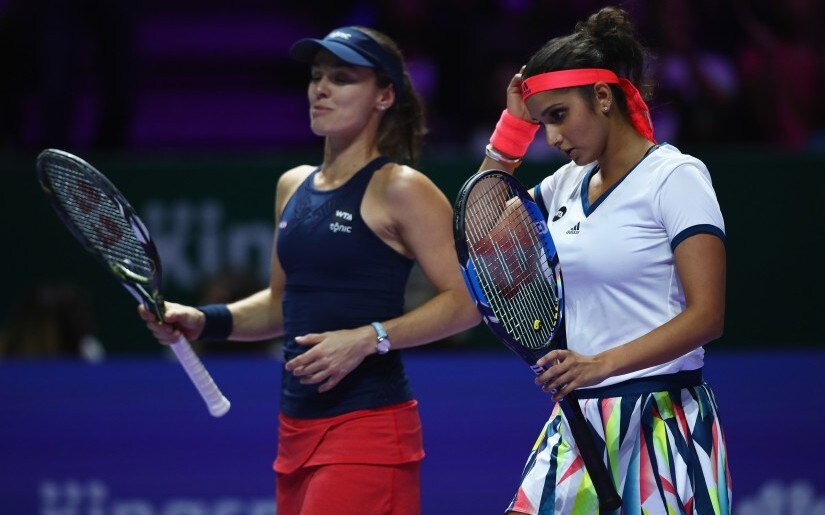 Sania Mirza and Martina Hingis together won 13 titles over a 16-month span, which also involved a 41-match winning streak. Getty[/caption] Sania Mirza and Martina Hingis started on 2016 on the best note possible, winning titles in Brisbane, Sydney and then lifting the Australian Open trophy for their third slam as a duo. They followed the major win with another title at St Petersburgh but soon hit roadbumps thereafter. After two shock exits at the French Open and Wimbledon, they called it quits in August. Together, the pair had won 13 titles over a 16-month span, which also involved a 41-match winning streak. The decision became one of the biggest talking points of the season and was heartbreaking for ‘SanTina’ fans. In hindsight, the split turned out to be a wise step for Sania. She paired up with Barbora Strycova post the Rio Olympics, and found instant success. With the Czech, Sania won titles at Cincinnati and Tokyo and reached another final at Wuhan. She racked up enough doubles ranking points in the second half of the season to ensure that she ended the year as World No 1 for a second straight year. — Nikhila Makker Stan Wawrinka wins match, Juan Martin del Potro wins respect [caption id=“attachment_3176062” align=“alignnone” width=“825”]
Sania Mirza and Martina Hingis together won 13 titles over a 16-month span, which also involved a 41-match winning streak. Getty[/caption] Sania Mirza and Martina Hingis started on 2016 on the best note possible, winning titles in Brisbane, Sydney and then lifting the Australian Open trophy for their third slam as a duo. They followed the major win with another title at St Petersburgh but soon hit roadbumps thereafter. After two shock exits at the French Open and Wimbledon, they called it quits in August. Together, the pair had won 13 titles over a 16-month span, which also involved a 41-match winning streak. The decision became one of the biggest talking points of the season and was heartbreaking for ‘SanTina’ fans. In hindsight, the split turned out to be a wise step for Sania. She paired up with Barbora Strycova post the Rio Olympics, and found instant success. With the Czech, Sania won titles at Cincinnati and Tokyo and reached another final at Wuhan. She racked up enough doubles ranking points in the second half of the season to ensure that she ended the year as World No 1 for a second straight year. — Nikhila Makker Stan Wawrinka wins match, Juan Martin del Potro wins respect [caption id=“attachment_3176062” align=“alignnone” width=“825”]
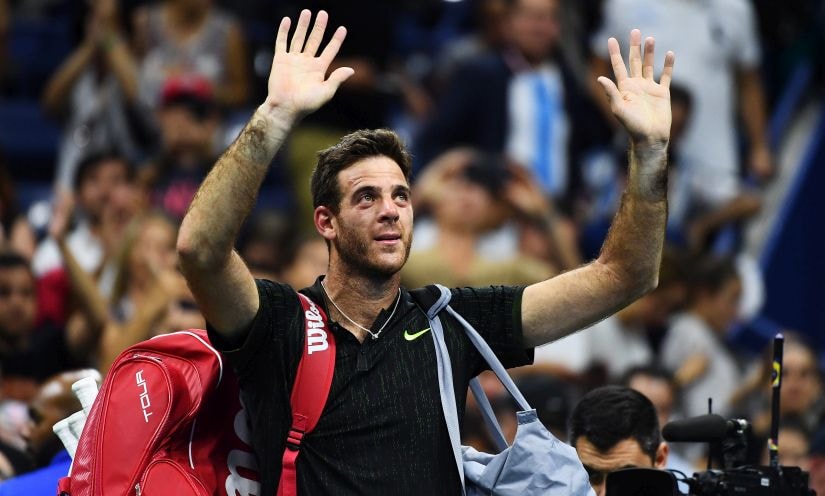 An emotional Juan Martin del Potro of Argentina waves to the crowd after being defeated by Stan Wawrinka. Getty Images[/caption] Towards the end of the three hours and 13 minutes long US Open quarterfinal match, when the result was all but apparent, the crowd pulled an astounding, resounding cheer for Juan Martin del Potro. Such vociferous was the cheering at 1 AM, it moved the 2009 champion to tears. The Argentine cried, as Stan Wawrinka waited to serve out the match, applauded with his racket, and eventually lost the gruelling clash to the eventual champion. The 7-6(5), 4-6, 6-3, 6-2 victory meant that Del Potro’s magical month had come to an end — it started at the Rio Olympics, when he beat Djokovic and Rafael Nadal on way to the silver and ended in him reaching the quarters of the New York major and a top-50 ranking. Anything Del Potro does out of the ordinary elicits an enthusiastic response from fans. From becoming a Grand Slam champ at 20 to virtual ignominy three left wrist surgeries later, Del Potro is the one that got away for tennis fans. He ended his 2016 season by leading Argentina to a Davis Cup win, but then announced his absence from the Australian Open due to his persistent fitness issues — a microcosm of his entire career, if there ever was one. – Zenia D’Cunha The rise of Karolina Pliskova and her maiden Grand Slam final [caption id=“attachment_3176126” align=“alignnone” width=“825”]
An emotional Juan Martin del Potro of Argentina waves to the crowd after being defeated by Stan Wawrinka. Getty Images[/caption] Towards the end of the three hours and 13 minutes long US Open quarterfinal match, when the result was all but apparent, the crowd pulled an astounding, resounding cheer for Juan Martin del Potro. Such vociferous was the cheering at 1 AM, it moved the 2009 champion to tears. The Argentine cried, as Stan Wawrinka waited to serve out the match, applauded with his racket, and eventually lost the gruelling clash to the eventual champion. The 7-6(5), 4-6, 6-3, 6-2 victory meant that Del Potro’s magical month had come to an end — it started at the Rio Olympics, when he beat Djokovic and Rafael Nadal on way to the silver and ended in him reaching the quarters of the New York major and a top-50 ranking. Anything Del Potro does out of the ordinary elicits an enthusiastic response from fans. From becoming a Grand Slam champ at 20 to virtual ignominy three left wrist surgeries later, Del Potro is the one that got away for tennis fans. He ended his 2016 season by leading Argentina to a Davis Cup win, but then announced his absence from the Australian Open due to his persistent fitness issues — a microcosm of his entire career, if there ever was one. – Zenia D’Cunha The rise of Karolina Pliskova and her maiden Grand Slam final [caption id=“attachment_3176126” align=“alignnone” width=“825”]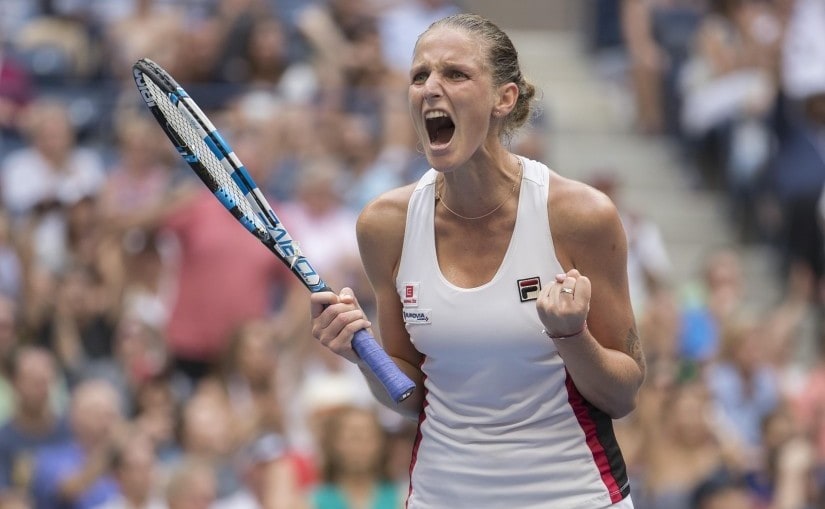 Karolina Pliskova had a breakthrough year in 2016, climbing to World No 6. Reuters [/caption] Karolina Pliskova made the call of forgoing Olympic glory and skipped Rio 2016, a slightly controversial decision that ultimately paid off handsomely for her. The Czech had a career-changing three weeks in the second half of the season that helped her rise to No 6 in the WTA rankings. She clinched the title in Cincinnati in August, upsetting Kerber and denying her the world number one ranking at that point. She went into the US Open with a dubious record of not making a major quarterfinal yet, never managing to make it past the third round in her first 17 slam appearances. In her fourth round encounter, she was up against seven-time Grand Slam champion Venus Williams. And the match turned out to be one of the best of 2016. Pliskova survived a match point to prevail 4-6, 6-4, 7-6(3) over Venus and a boisterous Flushing Meadows crowd. Four days later, she repeated her heroics, beating sister Serena to make her maiden Grand Slam final. — Nikhila Makker Novak Djokovic’s shock early exit in Rio [caption id=“attachment_3176054” align=“alignnone” width=“825”]
Karolina Pliskova had a breakthrough year in 2016, climbing to World No 6. Reuters [/caption] Karolina Pliskova made the call of forgoing Olympic glory and skipped Rio 2016, a slightly controversial decision that ultimately paid off handsomely for her. The Czech had a career-changing three weeks in the second half of the season that helped her rise to No 6 in the WTA rankings. She clinched the title in Cincinnati in August, upsetting Kerber and denying her the world number one ranking at that point. She went into the US Open with a dubious record of not making a major quarterfinal yet, never managing to make it past the third round in her first 17 slam appearances. In her fourth round encounter, she was up against seven-time Grand Slam champion Venus Williams. And the match turned out to be one of the best of 2016. Pliskova survived a match point to prevail 4-6, 6-4, 7-6(3) over Venus and a boisterous Flushing Meadows crowd. Four days later, she repeated her heroics, beating sister Serena to make her maiden Grand Slam final. — Nikhila Makker Novak Djokovic’s shock early exit in Rio [caption id=“attachment_3176054” align=“alignnone” width=“825”]
 Juan Martin Del Potro and Novak Djokovic after their epic Olympics match. Getty Images[/caption] Imagine you are about to face the world number one tennis player, Novak Djokovic, in an Olympics first round face-off. Now imagine being stuck in an elevator for 40 minutes, right before your match. Surely, that can’t help calm your nerves down. But when Juan Martin del Potro was subjected to this ordeal, he appeared to have nerves of steel as he came on to court after being rescued and beat the Serbian in straight sets, 7-6 (7/4) 7-6 (7/2). He played a cool and composed game, outplaying Djokovic as if nothing had happened in the lead up to the game. Djokovic, who was a hot favourite for the gold medal, was beaten by the 145th seeded player recovering from injury, in what was one of the biggest upsets of the Rio Olympics. Del Potro went on to reach the final, only to be defeated by Andy Murray. Djokovic’s shock defeat at the hands of the Argentinian turned out to be one of the most defining moments of 2016 on the men’s tour, having polarising repercussions for both players. – Nitish Rampal Maria Sharapova’s positive drug test and suspension [caption id=“attachment_3176138” align=“alignnone” width=“825”]
Juan Martin Del Potro and Novak Djokovic after their epic Olympics match. Getty Images[/caption] Imagine you are about to face the world number one tennis player, Novak Djokovic, in an Olympics first round face-off. Now imagine being stuck in an elevator for 40 minutes, right before your match. Surely, that can’t help calm your nerves down. But when Juan Martin del Potro was subjected to this ordeal, he appeared to have nerves of steel as he came on to court after being rescued and beat the Serbian in straight sets, 7-6 (7/4) 7-6 (7/2). He played a cool and composed game, outplaying Djokovic as if nothing had happened in the lead up to the game. Djokovic, who was a hot favourite for the gold medal, was beaten by the 145th seeded player recovering from injury, in what was one of the biggest upsets of the Rio Olympics. Del Potro went on to reach the final, only to be defeated by Andy Murray. Djokovic’s shock defeat at the hands of the Argentinian turned out to be one of the most defining moments of 2016 on the men’s tour, having polarising repercussions for both players. – Nitish Rampal Maria Sharapova’s positive drug test and suspension [caption id=“attachment_3176138” align=“alignnone” width=“825”] Maria Sharapova tested positive for meldonium and had to serve a 15-month ban in 2016. Reuters[/caption] Maria Sharapova dropped a bombshell in March that she had tested positive for meldonium, a drug that was banned by the World Anti-Doping Agency (WADA). In the immediate scheme of things, Sharapova’s positive dope test and the ensuing ban meant very little. The Russian tennis star had a year wreaked by injury and had lost her form completely. Her contemporaries had ahead and a return to the top seemed nigh impossible. In fact, had she announced her retirement, nobody would have been surprised. But in a year marked by one of the largest state-sponsored doping programmes coming to light, Sharapova became one of the first Russian athletes to be caught in the dope net. The two-year ban was ultimately reduced to 15 months, but even with the curtailed sentence, it indicated a tough, no-nonsense stand on doping that will set down a marker for years to come. And while the debate of whether or not it was too harsh continues, the ITF had drawn a line in the sand, one that will serve as a stern warning for tennis stars in the future. – Aashray Hariharan Nadal comes full circle with another Olympics gold [caption id=“attachment_3176058” align=“alignnone” width=“825”]
Maria Sharapova tested positive for meldonium and had to serve a 15-month ban in 2016. Reuters[/caption] Maria Sharapova dropped a bombshell in March that she had tested positive for meldonium, a drug that was banned by the World Anti-Doping Agency (WADA). In the immediate scheme of things, Sharapova’s positive dope test and the ensuing ban meant very little. The Russian tennis star had a year wreaked by injury and had lost her form completely. Her contemporaries had ahead and a return to the top seemed nigh impossible. In fact, had she announced her retirement, nobody would have been surprised. But in a year marked by one of the largest state-sponsored doping programmes coming to light, Sharapova became one of the first Russian athletes to be caught in the dope net. The two-year ban was ultimately reduced to 15 months, but even with the curtailed sentence, it indicated a tough, no-nonsense stand on doping that will set down a marker for years to come. And while the debate of whether or not it was too harsh continues, the ITF had drawn a line in the sand, one that will serve as a stern warning for tennis stars in the future. – Aashray Hariharan Nadal comes full circle with another Olympics gold [caption id=“attachment_3176058” align=“alignnone” width=“825”]
 Rio 2016 was a full circle for Nadal, as he won the gold in doubles this time, despite a rough year. Getty Images[/caption] In 2008, Rafael Nadal was at the top of his game and fittingly won the Olympics singles gold at Beijing. In 2016, he was an injury-plagued, struggling tennis player who was battling his way through matches. To then go and win another Olympics gold – in men’s doubles this time – was a perfect representation of his gritty career so far. He lost in the first round of the Australian Open and mostly struggled with injuries in the first half of the season. The King of Clay won two clay court titles in singles – at Monte Carlo and Barcelona – for his only two trophies of the year. But the biggest setback was having to withdraw from his beloved French Open in the first week with a wrist injury. But the redemption came soon after – when the Spanish flag-bearer pushed himself to the limit at the Olympics. He played his first match in months and managed to reach the semifinals, but ended up fourth. Then came the doubles final, where Nadal, with Marc López, one of his closest friends, won the gold medal. The images said a thousand words – that medal meant a lot. Nadal has always been the poster child for resurgence, and 2016 was further proof of that. – Zenia D’Cunha Dominika Cibulkova outlasts Agnieszka Radwanska [caption id=“attachment_3176168” align=“alignnone” width=“825”]
Rio 2016 was a full circle for Nadal, as he won the gold in doubles this time, despite a rough year. Getty Images[/caption] In 2008, Rafael Nadal was at the top of his game and fittingly won the Olympics singles gold at Beijing. In 2016, he was an injury-plagued, struggling tennis player who was battling his way through matches. To then go and win another Olympics gold – in men’s doubles this time – was a perfect representation of his gritty career so far. He lost in the first round of the Australian Open and mostly struggled with injuries in the first half of the season. The King of Clay won two clay court titles in singles – at Monte Carlo and Barcelona – for his only two trophies of the year. But the biggest setback was having to withdraw from his beloved French Open in the first week with a wrist injury. But the redemption came soon after – when the Spanish flag-bearer pushed himself to the limit at the Olympics. He played his first match in months and managed to reach the semifinals, but ended up fourth. Then came the doubles final, where Nadal, with Marc López, one of his closest friends, won the gold medal. The images said a thousand words – that medal meant a lot. Nadal has always been the poster child for resurgence, and 2016 was further proof of that. – Zenia D’Cunha Dominika Cibulkova outlasts Agnieszka Radwanska [caption id=“attachment_3176168” align=“alignnone” width=“825”]
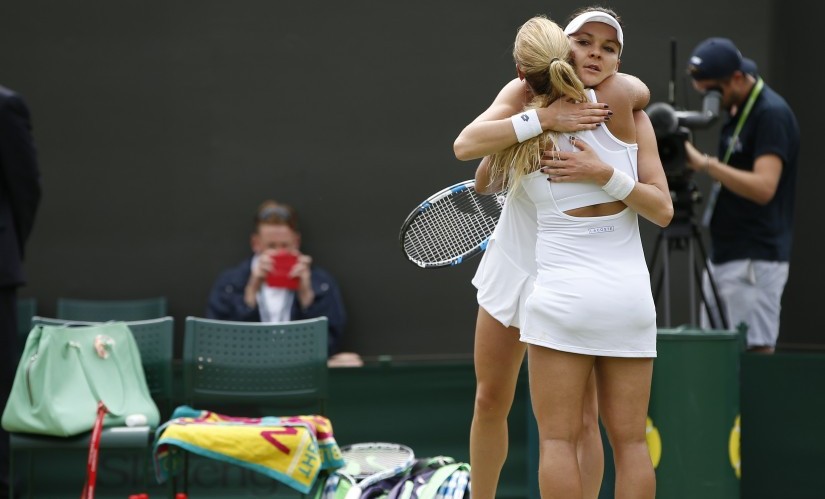 Dominika Cibulkova with Agnieszka Radwanska after a match that featured some of the most enthralling shot-making of the year. Reuters[/caption] Wimbledon 2016. No 3 Court. What was expected to be just another one of sixteen singles matches scheduled on ‘Maniac Monday’, turned out to one of the most entertaining, if not the best, match of the year. World No 3 Agnieszka Radwanska was up against Dominika Cibulkova for a place in the quarterfinals. In a battle of contrasting styles, Cibulkova emerged as the winner after three dramatic, gruelling hours. In her 6-3, 5-7, 9-7 victory, she hit 56 winners to out-maneuver, out hit and outlast her opponent. Cibulkova matched the Pole’s finesse with her power, she pummelled the ball to negate Radwanska’s spin and fired forehand after forehand to put her on the ropes. And just when you thought that Cibulkova had run out of gas, she stepped up to save a match point. In fitting fashion, she then closed the clash out with yet another trademark forehand winner. This match wasn’t historically significant, nor did it decide the eventual winner, but it deserves a place on the list for featuring some of the most enthralling shot-making of the year. — Nikhila Makker
Dominika Cibulkova with Agnieszka Radwanska after a match that featured some of the most enthralling shot-making of the year. Reuters[/caption] Wimbledon 2016. No 3 Court. What was expected to be just another one of sixteen singles matches scheduled on ‘Maniac Monday’, turned out to one of the most entertaining, if not the best, match of the year. World No 3 Agnieszka Radwanska was up against Dominika Cibulkova for a place in the quarterfinals. In a battle of contrasting styles, Cibulkova emerged as the winner after three dramatic, gruelling hours. In her 6-3, 5-7, 9-7 victory, she hit 56 winners to out-maneuver, out hit and outlast her opponent. Cibulkova matched the Pole’s finesse with her power, she pummelled the ball to negate Radwanska’s spin and fired forehand after forehand to put her on the ropes. And just when you thought that Cibulkova had run out of gas, she stepped up to save a match point. In fitting fashion, she then closed the clash out with yet another trademark forehand winner. This match wasn’t historically significant, nor did it decide the eventual winner, but it deserves a place on the list for featuring some of the most enthralling shot-making of the year. — Nikhila Makker
Year in Review 2016: From Murray's rise to Sharapova's ban, 10 defining moments in tennis
FP Sports
• December 27, 2016, 17:44:37 IST
Andy Murray and Angelique Kerber emerged as the the standout players of 2016. Here’s a look at some of the most defining moments of the 2016 tennis season.
Advertisement
)
End of Article